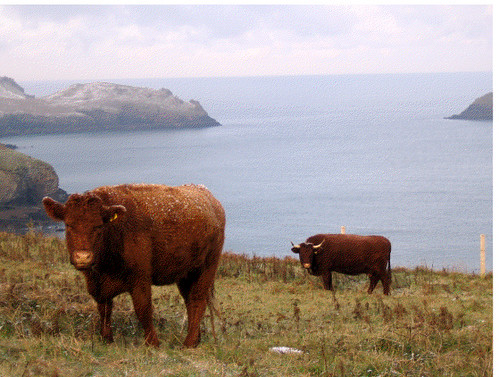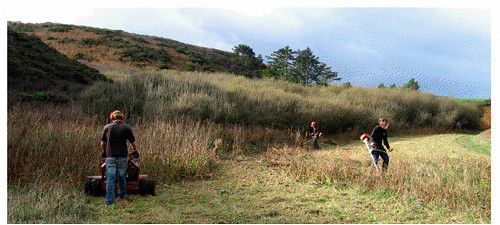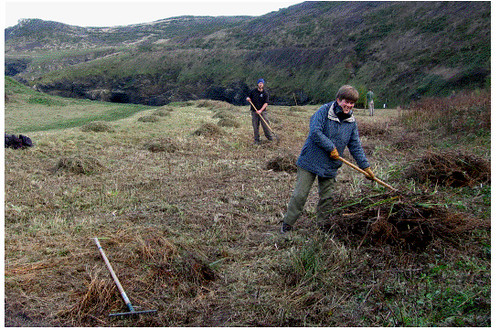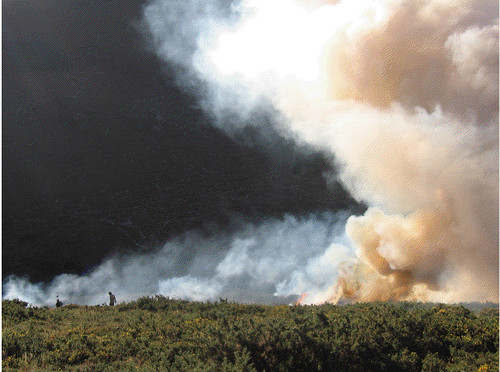
This time of year is a busy one for us, with lots of repairs and improvements to make on the popular coast path, while the crowds have abated for the winter, as well as catching up with all the important conservation management measures that we put into place to enhance the beauty and diversity of our North Cornwall properties. Here are some of the things we’ve been up to recently.
Meadow cuts

Over a period of several weeks from late autumn we’ve been making the most of the occasional dry spells, to finish all our meadow cuts. Our North Cornwall properties contain a number of small meadows that are strategically placed and carefully managed to maximise their benefit to our native wildlife. Once a year, in late autumn / early winter the meadows are cut back and the old vegetation removed.

This opens up the canopy or ‘sword structure’ of the meadow and allows the less dominant plant species to come through. This increases both the plant and small animal diversity, and is particularly liked by many of our butterfly species which are a popular sight for our visitors in the summer.
Scrub burning

The exceptionally cold, dry conditions combined with the nor’ easterly winds that we’ve experienced over the last couple of weeks have made for ideal conditions for coastal scrub burning. This practice of controlled burning, traditionally known as swailing, is a very effective method of clearing old, dead plant matter and opening up the scrub to allow new growth to come through.

We’ve concentrated our activities on the spectacular Tregragon Valley, where the gorse especially was beginning to become quite dominant. Swailing will open up the hillside and increase diversity by allowing less competitive plant species to grow. This site was also home to a reintroduction of the Large Blue butterfly, which thrives in open, closely-grazed grassland where it feeds on Thyme. We have been planting Thyme at this site over several years for this very reason, which will benefit from a more open canopy.
Ponies

This week has seen the arrival of a herd of ten young Dartmoor ponies that will be grazing a strip of our coastal land on the cliffs above the historic fishing village of Port Quin for the winter. The ponies have been kindly lent to us by the Watson’s from Dartmoor to facilitate our coastal grazing habitat management. Similar to meadow cuts and swailing, these hardy little animals that hail from the moorland and mires of Dartmoor will help to increase plant diversity and open up sword structure. They are very selective grazers with a diet that includes the coarser grasses as well as even bramble and gorse! This helps us to control some of the more dominant plants within the maritime grassland.
North Cornwall Seasonal Ranger,
Adam Cowles